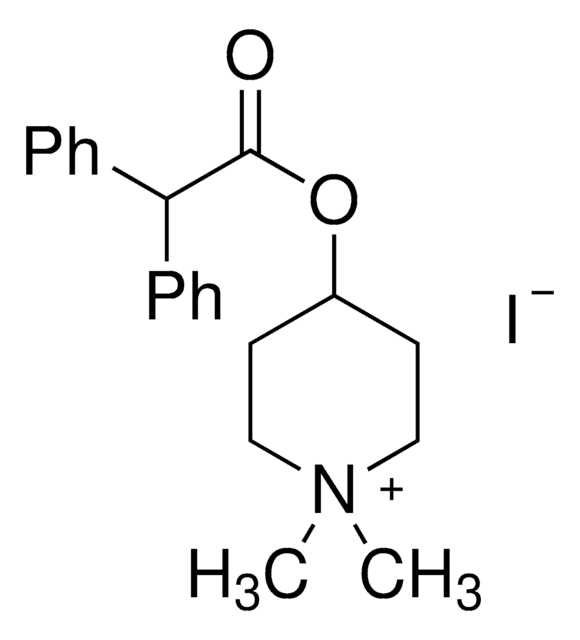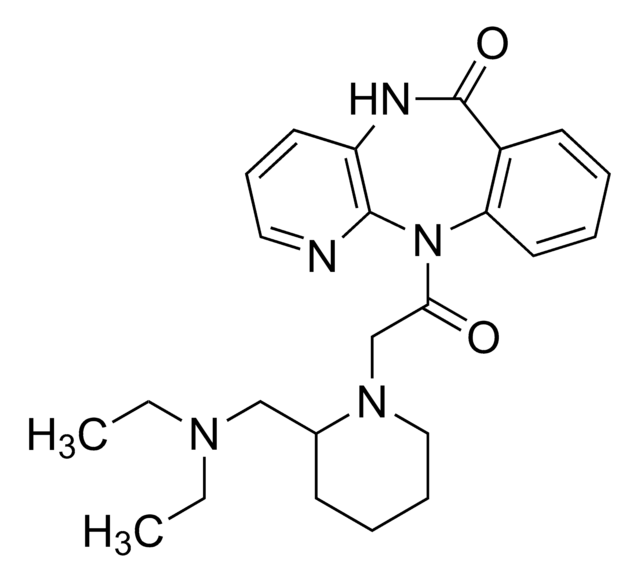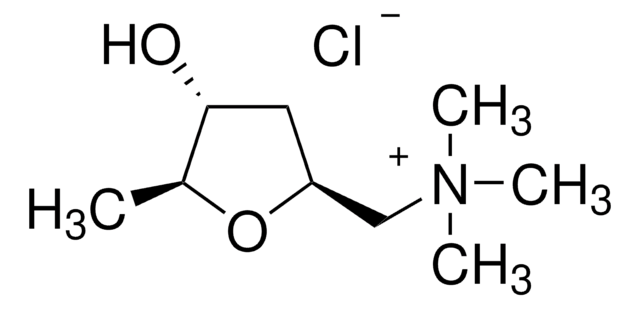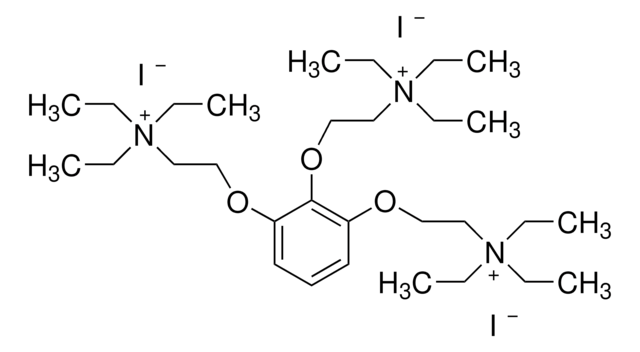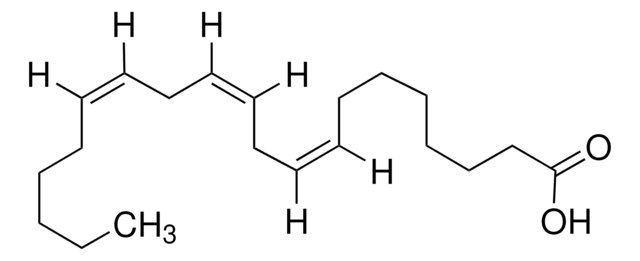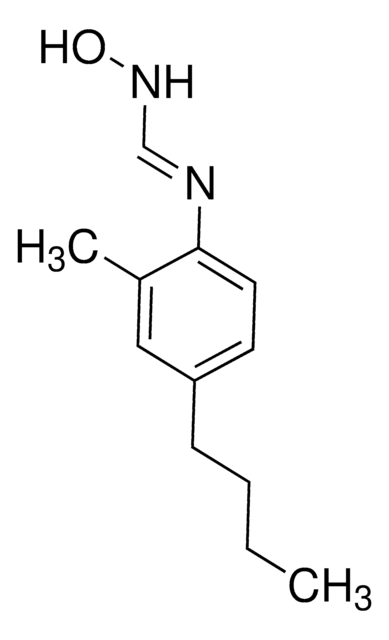Kluczowe dokumenty
H127
p-Fluorohexahydro-sila-difenidol hydrochloride
powder, ≥98% (HPLC)
Synonim(y):
Cyclohexyl-(4-fluorophenyl)-(3-N-piperidinopropyl)silanol hydrochloride, P-F-HHSiD hydrochloride
About This Item
Polecane produkty
Poziom jakości
Próba
≥98% (HPLC)
Formularz
powder
kolor
white to beige
rozpuszczalność
H2O: slightly soluble 1.5 mg/mL
45% (w/v) aq 2-hydroxypropyl-β-cyclodextrin: >14 mg/mL
ethanol: soluble
ciąg SMILES
Cl[H].O[Si](CCCN1CCCCC1)(C2CCCCC2)c3ccc(F)cc3
InChI
1S/C20H32FNOSi.ClH/c21-18-10-12-20(13-11-18)24(23,19-8-3-1-4-9-19)17-7-16-22-14-5-2-6-15-22;/h10-13,19,23H,1-9,14-17H2;1H
Klucz InChI
JMTYYLMGSBSPPK-UHFFFAOYSA-N
informacje o genach
human ... CHRM3(1131)
Zastosowanie
- jako antagonista receptora M3/muskarynowego receptora acetylocholiny w celu zbadania jego udziału w indukowanej karbacholem biosyntezie Egr-1 przy użyciu ludzkich komórek neuroblastoma
- jako antagonista receptora M3 w celu zbadania jego udziału w angiogenezie indukowanej przez N,N-dietylo-m-toluamid (DEET) w ludzkich komórkach śródbłonka żyły pępowinowej (HUVEC)
- w badaniu mającym na celu zbadanie roli aklidynium w przekształcaniu ludzkich fibroblastów w miofibroblasty
Działania biochem./fizjol.
Cechy i korzyści
Kod klasy składowania
11 - Combustible Solids
Klasa zagrożenia wodnego (WGK)
WGK 3
Temperatura zapłonu (°F)
Not applicable
Temperatura zapłonu (°C)
Not applicable
Środki ochrony indywidualnej
Eyeshields, Gloves, type N95 (US)
Wybierz jedną z najnowszych wersji:
Masz już ten produkt?
Dokumenty związane z niedawno zakupionymi produktami zostały zamieszczone w Bibliotece dokumentów.
Nasz zespół naukowców ma doświadczenie we wszystkich obszarach badań, w tym w naukach przyrodniczych, materiałoznawstwie, syntezie chemicznej, chromatografii, analityce i wielu innych dziedzinach.
Skontaktuj się z zespołem ds. pomocy technicznej

